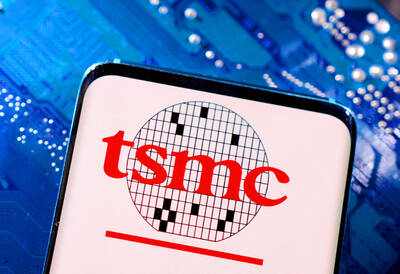Could nano apartments — billed as one way of solving Hong Kong’s chronic housing shortage — be on the way out as quickly as they grabbed the public’s attention?
Two years ago, when the developer of a residential project in the New Territories unveiled units smaller than a parking space, an executive was quoted as saying: “Even the emperor living in a place as big as the Forbidden City still slept on a bed.”
Even so, it seems that ordinary residents are having second thoughts about super-tiny apartments.
A sale over the weekend at the project, where some dwellings measured just 12m2, failed to attract much interest, with only two of the 73 units on offer selling.
“The rise and popularity of nano flats is largely centered around their relative affordability for buyers with limited budgets,” Jones Lang LaSalle Inc head of research Denis Ma (馬安平) said. “When housing prices start to sag, demand for these types of properties usually plummets as buyers turn their attention to larger units at the same price point.”
A slide in home prices is already under way in Hong Kong. Property prices have declined 6.3 percent from their August peak, Centaline data showed, while Midland Realty last month said that new-home sales that month were on track to be the lowest by volume since early 2016.
History suggests that small apartments tend to suffer more when there are price adjustments: The cost for units measuring less than 40m2 dropped 12 percent during the 2015-to-2016 price correction versus a 9 percent dip for those measuring 70m2 to 100m2, government data showed.
This will come as bad news to home builders hoping to cash in on the short-lived tiny craze, where apartments the size of a Tesla Model X were last year selling for about US$500,000.
Jones Lang LaSalle predicts that 3,300 new nano flats measuring 19m2 or less are to be completed between this year and 2020, up by 35 percent from the previous three-year period.

When Lika Megreladze was a child, life in her native western Georgian region of Guria revolved around tea. Her mother worked for decades as a scientist at the Soviet Union’s Institute of Tea and Subtropical Crops in the village of Anaseuli, Georgia, perfecting cultivation methods for a Georgian tea industry that supplied the bulk of the vast communist state’s brews. “When I was a child, this was only my mum’s workplace. Only later I realized that it was something big,” she said. Now, the institute lies abandoned. Yellowed papers are strewn around its decaying corridors, and a statue of Soviet founder Vladimir Lenin

UNIFYING OPPOSITION: Numerous companies have registered complaints over the potential levies, bringing together rival automakers in voicing their reservations US President Donald Trump is readying plans for industry-specific tariffs to kick in alongside his country-by-country duties in two weeks, ramping up his push to reshape the US’ standing in the global trading system by penalizing purchases from abroad. Administration officials could release details of Trump’s planned 50 percent duty on copper in the days before they are set to take effect on Friday next week, a person familiar with the matter said. That is the same date Trump’s “reciprocal” levies on products from more than 100 nations are slated to begin. Trump on Tuesday said that he is likely to impose tariffs

HELPING HAND: Approving the sale of H20s could give China the edge it needs to capture market share and become the global standard, a US representative said The US President Donald Trump administration’s decision allowing Nvidia Corp to resume shipments of its H20 artificial intelligence (AI) chips to China risks bolstering Beijing’s military capabilities and expanding its capacity to compete with the US, the head of the US House Select Committee on Strategic Competition Between the United States and the Chinese Communist Party said. “The H20, which is a cost-effective and powerful AI inference chip, far surpasses China’s indigenous capability and would therefore provide a substantial increase to China’s AI development,” committee chairman John Moolenaar, a Michigan Republican, said on Friday in a letter to US Secretary of

Taiwan Semiconductor Manufacturing Co’s (TSMC, 台積電) market value closed above US$1 trillion for the first time in Taipei last week, with a raised sales forecast driven by robust artificial intelligence (AI) demand. TSMC saw its Taiwanese shares climb to a record high on Friday, a near 50 percent rise from an April low. That has made it the first Asian stock worth more than US$1 trillion, since PetroChina Co (中國石油天然氣) briefly reached the milestone in 2007. As investors turned calm after their aggressive buying on Friday, amid optimism over the chipmaker’s business outlook, TSMC lost 0.43 percent to close at NT$1,150